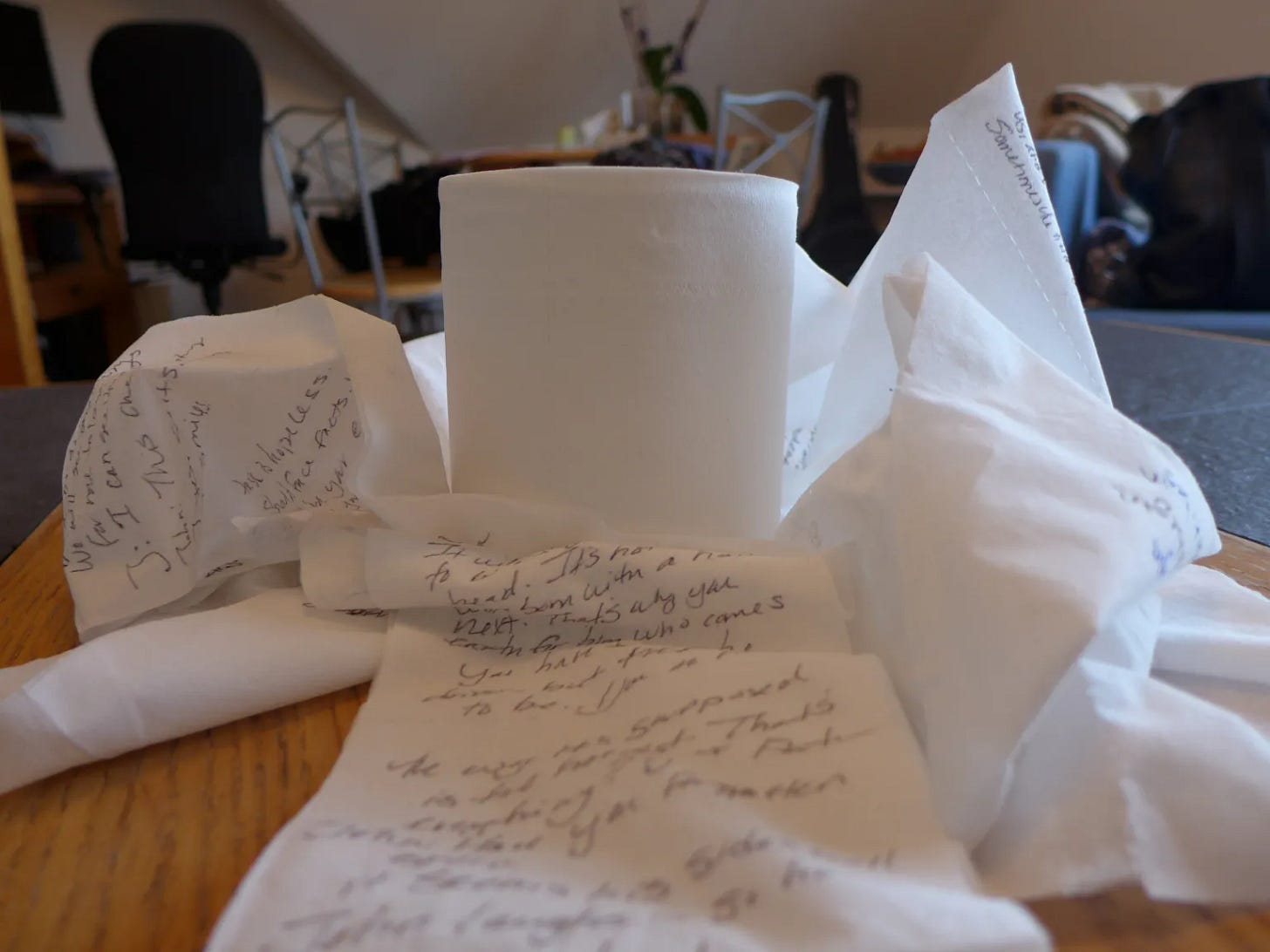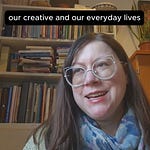Writing - Week 2
The Total Artist: An Adventure in Expressive Living continues, as we continue to dig into the creative possibilities of writing.
In the video…
This video thinks more deeply about: what exactly is the essence of writing?
We go back to basics to look for ways to avoid getting stuck and stay in touch with inspiration!
This video briefly touches on:
Connecting with our inspiration
The cyclical relationship between different modes of writing: stream-of-consciousness and refining/editing
Structure as a tool of creative expression
Simplifying process: break your idea into pieces, then experiment with the order they go in
Clarifying ideas: they arrive as a jumble of feelings and thoughts, but writing untangles them
How the physical process of how we write (materials, location etc) impacts what we create
Main takeaway: What captures our interest when we are writing points to what makes us unique as artists
Case study: The magic of changing your materials
In this video, I reference a project I did a number of years ago now, called This Is A Play.
I wrote my first play during a temp job as a receptionist at an accounting organisation. I ended up writing it on the narrow ‘compliment’ slips they would attach to documents going out. (I figured that if I used office stationery, I was less likely to arouse suspicion that I was writing on the job.)
I didn’t plan what was going to happen next. It was completely unintentional, but as I was writing, what came out was a piece made up of very short lines - because that is what would fit across the page. It was a strange little play (called - you guessed it - This Is A Play), and I loved that I had come up with something I probably never would have written otherwise.
That play won me my first playwriting award.
Later on in my creative journey, when I was feeling like I had lost my momentum, I revisited this approach. I set up a playwriting experiment called This Is A Play.
I partnered with the brilliant photographer Julia Forsman, who sent me photographs I could use for inspiration, and set myself the challenge of using different writing materials each week. I would then share the work I made and a bit about the writing process. You can see some of the examples of what I created here:
When I told my writer friends I was doing this project, most of them thought I was nuts. Wouldn’t it be a waste of time? How would I end up anything usable? And the truth is, often, I didn’t. But even when the text that came out was a bit of a mess, it ended up leading to some really good material that fed into plays that I continued developing afterwards because it inspired me to think in new ways.
Here’s some writing I did on a roll of toilet roll. Anything is fair game!
If you are feeling uninspired:
Inspiration comes in cycles, and that’s just a normal part of being creative. If you feel like you’re getting stuck in an inspiration dip, try changing something about the physical process of writing.
The key element for sparking new inspiration is change.
Things you can change include:
Where you are writing. Quiet and protected space is not always better. A fabulous poet (shoutout Michaela Coplen!) that I know wrote an incredible series of poems while sat on buses. You could write in a cafe to get new ideas for characters from the customers. Or maybe you usually thrive on noise and want to take it to the other extreme - to write hiding under the sheet with a flashlight at night like a little kid. If you normally stand, sit. Or sit, stand.
Your writing materials. Words often flow more easily when we are using a writing tool we are comfortable with, but easier is not always better - like I discovered with This Is A Play. Write on the back of a napkin. Write on a mirror with lipstick (I’m saving this one for a day I really need it). Use voice transcribe and speak your words instead of using fingers to write. Cut up bits of a magazine and paste the words together to make your own sentences.
When you are writing. Can you change the time of day or rhythm of when you are working? What happens if you alternate writing a line of something with each piece of laundry you fold? What if you give yourself a night to write into the wee hours and see what that feels like? Or what if you lay out your notebook the night before and rise with the dawn chorus. What if you write for just five minutes on your lunch break - by the end of the week, you might even have a short story.
Who you are writing with. Writing does not have to be a solo activity. I know people who swear by body doubling - essentially sitting in silence to write together. But you can also share your creative process with others. TV scripts and lyrics are almost always written in collaboration, with people tossing words back and forth. If you want to experiment with cowriting, young kids are amazing people to do this with because they are up for anything; but you could ask anyone - from a friend to a stranger on the street - to spend a few minutes creating words with you.
What you are writing about. Choose a topic you might never focus on (example: the sex lives of fruit flies) - what is there to say about this? What do you find interesting? You can research something new or just pick a topic and invent your own facts for a fantasy world. Are you uncomfortable with heavy emotion? Try writing the most emotive, passionate narrative that you can manage. When there is tension between our natural tendencies and our subject matter, really interesting things can pop up.
The form you are writing for. For the next week we’re continuing to focus on prose, but that can be so many different things. If you are stuck on something, shift the idea to a different format. What if the novel becomes a letter? What if the essay becomes a short story? What if they both become a bullet-pointed list of ideas?
The order of your words. This is referenced in the video, but simply taking something we have already written and chopping it up, or combining it with something that seems like an absolute non sequitur can become really interesting. What if you reorder all the sentences from back to front? (Sheila Heti has famously shared her diaries by putting all the sentences in alphabetical order.) You can also combine things in the process - mash up the fruit flies with the impassioned love letter? Why not!?
Mini-challenge for Week 2: do something unexpected
In something you are writing this week, find a way to include something surprising. (If you can do it more than once, even better!)
One of the best things about being creative is that making art gives us the ability to surprise ourselves.
Take the risk of changing something - you never know what will shake loose!
For now,
Alli
Access Support: If you have access needs that I’m not currently meeting, please do drop me a line! (The best email is contact@ac-smith.com.) I’d really like to make this project available to anyone who wants to participate.















Share this post